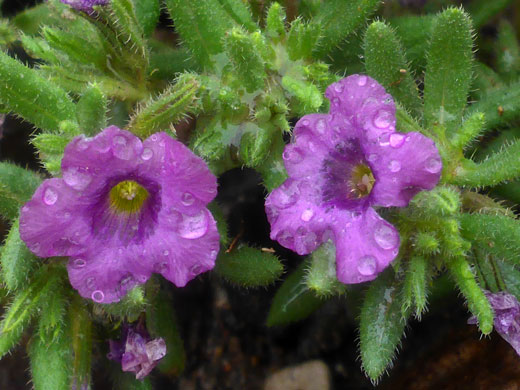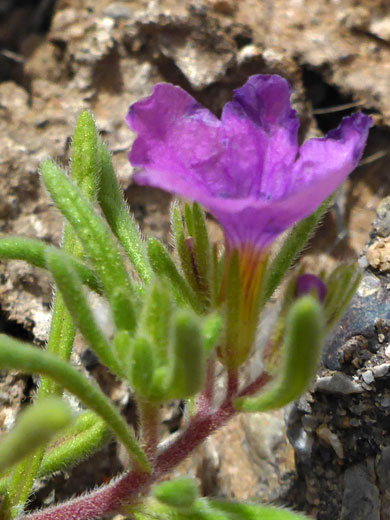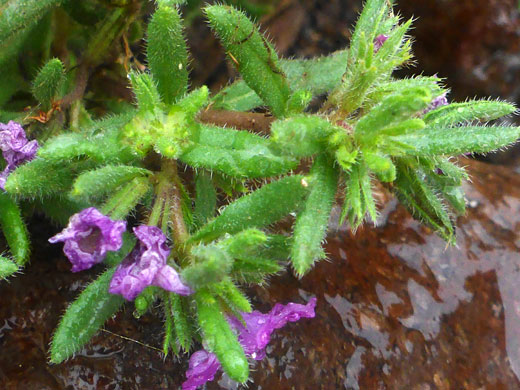Common names:
Rough nama, bristly nama, sandbells
Family:
Scientific name:
Nama hispidum
Synonym:
Nama hispida
Main flower color:
Range:
From California to the southern Great Plains
Height:
Up to 10 inches
Habitat:
Varied, in gravelly, rocky or sandy places, up to 5,000 feet
Leaves:
Basal and alternate, narrowly spatulate, up to 2.5 inches long and 0.2 inches across
Season:
February to June
Nama hispidum is a small species, under one foot, with ascending or spreading stems, branching at and above the base, and clustered leaves. Leaves have a sparse covering of short, stiff, non-glandular hairs. Basal leaves are stalked, stem leaves sessile. Basal leaf bases are tapering, to the winged petiole. Leaf surfaces are pitted with tiny glands.
Flowers are formed singly at the leaf nodes and in small clusters at the branch tips. The calyx is divided to the base into five narrow, linear lobes, almost as long as the corolla tube, which is reddish to pale yellow in color. The upper part of the corolla is purple (usually) or pinkish, with five rounded lobes, perpendicular to the tube.
Flowers are formed singly at the leaf nodes and in small clusters at the branch tips. The calyx is divided to the base into five narrow, linear lobes, almost as long as the corolla tube, which is reddish to pale yellow in color. The upper part of the corolla is purple (usually) or pinkish, with five rounded lobes, perpendicular to the tube.
All Contents © Copyright The American Southwest | Comments and Questions | Contribute | Site Map



